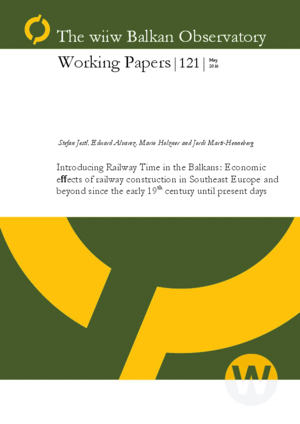Introducing Railway Time in the Balkans: Economic effects of railway construction in Southeast Europe and beyond since the early 19th century until present days
Eduard Alvarez, Mario Holzner, Stefan Jestl and Jordi Marti-Henneberg
wiiw Balkan Observatory Working Paper No. 121, May 2016
Abstract
In this paper we analyse the economic effects of railway infrastructure at the national level for European countries as well as at the local level for Southeast European cities based on a novel railway database capturing decades of the 19th century up to the early 21th century. A panel fixed effects regression analysis at the country level indicates a positive economic impact emanating from railway infrastructure, whereby the effect appears to be even stronger for less developed Southeast European countries. In addition, a linear spatially augmented multilevel model at the city level sheds light on the positive effects resulting from railway infrastructure on urban development. Its positive spillover effects occur within countries as well as across borders.
Keywords: Railway, infrastructure, Balkans, Southeast Europe, backwardness, urban development, economic development, railway accessibility, infrastructural spillovers, multilevel model, historical analysis
JEL classification: L92, N13, N14, N73, N74, N93, N94, O18, O47, R11, R41
Research Areas: Macroeconomic Analysis and Policy
